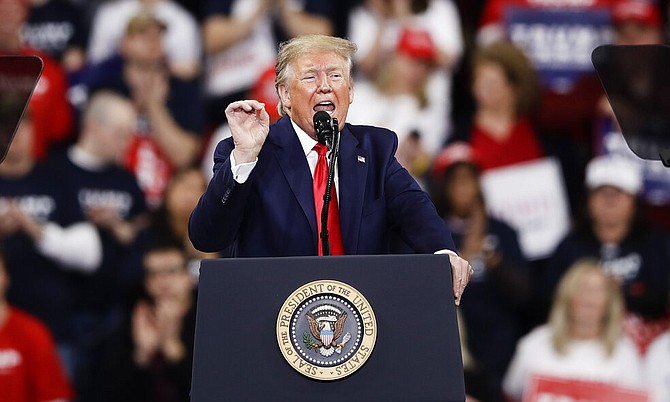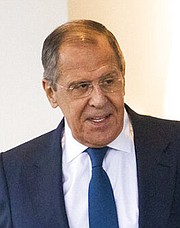With CHARLIE HARPER
Like many American states, Pennsylvania is bifurcated. There are the cities. And then there is the rest of the state.
Pennsylvania has two big cities everyone has heard of, Pittsburgh and Philadelphia. These urban centres, both attempting to rise from the rust and decay of the 19th and early 20th century industrial revolution in the United States, still lag far behind megalopolitan behemoths Los Angeles and Houston.
The essential core of both the City of Brotherly Love and the Steel City is still fundamentally liberal, grounded in trade union and academic influence and nurtured by generations of able and determined Democratic politicians. Both Philly and Pittsburgh are experiencing an urban renaissance that has attracted thousands of young people seeking career opportunities and a safe, relatively affordable place to raise their families.
For most of American political history, its two big cities have placed Pennsylvania (often abbreviated, even in conversation, as PA) in the Democratic column during national elections. The state’s two senators were often referred to as the senator from Philadelphia and the senator from Pittsburgh. Both would be Democrats.
2016 represented a stunning departure from that history. The election of Donald Trump three years ago is still hailed in rural Pennsylvania as a triumph of values long ignored in Washington and New York City. Central and swaths of Western Pennsylvania are known as “Alabama without the southern accent” to most who are familiar with its fierce devotion to local football teams, close-knit families and suspicion of outsiders.
In the woodsy central Pennsylvania hamlet of Bald Eagle, just off an interstate exit but far from urban influences, a huge sign defiantly welcomes visitors to a sprawling automobile salvage yard. “Trump: Still Making America Great,” it proclaims in six-foot high red letters. No one seriously questions the president’s popularity in these parts.
Mostly mountainous and heavily forested, Appalachian rural PA is not new to conservatism or support for Republican politicians. What was new three years ago, when Trump shocked the nation and the state’s own residents, was that many voters in the Philadelphia and Pittsburgh suburbs either voted for Trump or sat out the election to push back against the candidacy of personally unpopular Hillary Clinton.
Two years later, in 2018, the American President had managed to offend enough of these suburban voters – reportedly mostly women – that they turned against him in Pennsylvania and elsewhere around the country and emphatically delivered the House of Representatives back to the Democrats.
Pennsylvania is a state Trump will likely need to win again next year to remain in the White House. That is why, earlier this year, he flew to the north-central PA city of Williamsport for a rally with his base. And it’s why he showed up in the chocolate town of Hershey, outside Harrisburg, Tuesday evening for another rally with his base. Trump has visited PA twice more this year, and Vice President Mike Pence has been covering the state as well.
At one stop, Pence declared the Democrats “can’t run against our record”. With the American economy gaining an unexpectedly high 266,000 jobs last month, Pence is probably right, especially if those kinds of employment numbers continue.
At the Hershey rally, a defiant woman protester nonetheless managed to infiltrate the event, and when she became disruptive, Trump was visibly impatient when security didn’t remove her more quickly from the arena.
We’ll see more of the same in the months to come. There will be more signs like this one: “No More Years”.
We hear little about the wall now - but it’s still being built
On the subject of America’s relations with some of its neighbours, The Wall between the US and Mexico has moved out of the news recently. An update was provided this week by Ken Cuccinelli.
This guy actually makes Trump seem like a relative moderate. He is a dogged and very public foe of abortion; resolute climate-change denier; steadfast anti-immigrant crusader; pro-gun advocate; avowed homophobe and was an active supporter and campaigner for Texas Senator Ted Cruz in the 2016 presidential primary elections.
Cuccinelli was elected Attorney General of Virginia in 2010 and nearly won the governorship of the state three years later, losing by far less than one percent of the vote. As the attorney general in Virginia, Cuccinelli was known for using the considerable power of his office to promote his personal beliefs and antipathies. That he nearly won the governorship in 2013 in a state now without a major Republican officeholder is amazing.
Now apparently forgiven for his 2016 support of Cruz, Cuccinelli has resurfaced as the principal deputy director of the US Customs and Immigration Service and acting deputy secretary of the US Department of Homeland Security. He is in these acting roles because his outspoken extremism precludes Senate confirmation, even with GOP control of the US Senate.
As some legal scholars were questioning the legitimacy of even Cuccinelli’s current acting appointments, he appeared at a news conference arranged by the State Department to review immigration along the American southern border and US relations with Central America generally. Two senior State Department officials joined him, but Cuccinelli dominated the proceedings.
He explained that 88 miles of Trump’s Wall have been built this year, but that he expects another 500 miles to be completed by the end of 2020. He offered no justification for this astounding claim.
Speaking in a calm, well-modulated voice that belied his zealotry, Cuccinelli explained that “no more than one-sixth of asylum claims from Central Americans at the southern US border are legitimate.” He rattled off a bunch of statistics to support Trump’s immigration policies and touted a recently signed Asylum Cooperation Agreement with Guatemala, noting that similar pacts are or will be under negotiation with El Salvador and Honduras.
It all sounded reasonable, until one recalled the children in cages along the Rio Grande River and the outraged furore not so long ago in the national media.
Not forgetting that outrage was former Maryland governor and forgotten 2016 Democratic presidential candidate Martin O’Malley, who reportedly loudly and forcefully condemned and confronted Cuccinelli when the two men encountered each other over Thanksgiving at a popular Capitol Hill bar.
Both men had attended the same nearby swanky Catholic high school, and O’Malley reportedly accused Cuccinelli of betraying the humanitarian teachings of their Jesuit priests. Eyewitnesses reported that Cuccinelli, the newly-minted Trumper, simply fled the scene to avoid further confrontation and a possible fistfight.
Not exactly like his boss.
A symbol of Russian interference
Even against the bizarre background of the ongoing Democratic impeachment of Trump, Tuesday was a weird day in Washington. As two articles of impeachment were rolled out by the House Judiciary Committee, a couple of other noteworthy things happened.
First, even as the House was revealing its charges against Trump, charging that his attempts to extort Ukraine to help with his re-election represented high crimes and misdemeanours under the US constitution, the shadow of Russian interference in the 2016 election continues to dog the Trump administration.
A symbol of that Russian interference and undue influence over Trump was the image of the Russian ambassador and foreign minister in the White House in the earliest days of the his presidency. And yet, there was Russian Foreign Minister Sergei Lavrov, pictured, right back in the Oval Office this week, as if to underscore Trump’s belief that if he simply misbehaves or even breaks the law without any attempt to conceal it, the voters will forgive or even learn to ignore his misdeeds. One can wonder if the president is wrong in this belief.
Secondly, and much more encouragingly, House Speaker Nancy Pelosi signalled her readiness to endorse and push through the long-awaited successor to Bill Clinton’s NAFTA. The new North American free trade agreement between the US, Canada and Mexico is being hailed as good for labour, the environment and the three nations involved. USMCA is also likely to be good for the regional economy, and credit must be given to the Trump administration for pursuing this and actually negotiating a pact that improves on NAFTA.






Comments
Use the comment form below to begin a discussion about this content.
Sign in to comment
Or login with:
OpenID